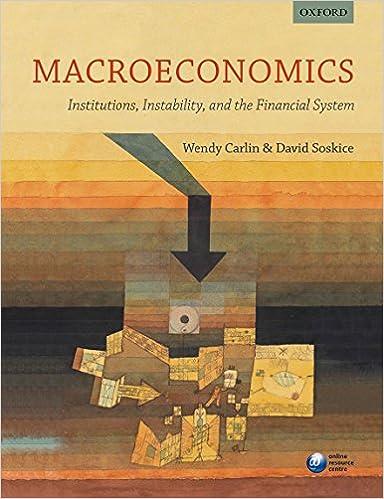This question uses the Macroeconomic Simulator available from the Carlin and Soskice website http://www.oup.com/uk/orc/carlin-soskice to model the
Question:
This question uses the Macroeconomic Simulator available from the Carlin and Soskice website http://www.oup.com/uk/orc/carlin-soskice to model the evolution of the public finances. Start by opening the simulator and choosing the closed economy version. Then reset all shocks by clicking the appropriate button on the left hand side of the main page. Use the simulator and the content of this chapter to work through the following questions: [Hint: for all these questions the real interest rate is \(3 \%\) ].
(a) Set long-run economic growth to 'yes' and the growth rate to \(2 \%\). Set the initial public expenditures/GDP to \(21 \%\) (giving a primary budget deficit of \(1 \%\) ) and the initial public debt/GDP to \(60 \%\).
(b) Click on the 'public finance figures' button on the top left of the main page. Is public debt sustainable? Justify your answer by using the debt dynamics equation (14.9).
(c) Change the long-run growth rate to \(4 \%\) and then \(6 \%\). Is the debt sustainable in these cases? If so, why?
(d) For each of the three cases, draw a diagram (with the primary deficit on the \(y\)-axis and the debt ratio on the \(x\)-axis) showing the evolution of the public debt ratio (see Section 14.3).
(e) Do the result for parts
(b) and
(c) still hold if the initial public expenditures/GDP is set to \(25 \%\) (giving a primary budget deficit of \(5 \%\) )? Why?
Step by Step Answer:

Macroeconomics Institutions Instability And The Financial System
ISBN: 9780199655793
1st Edition
Authors: Wendy Carlin, David Soskice




